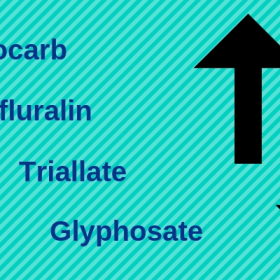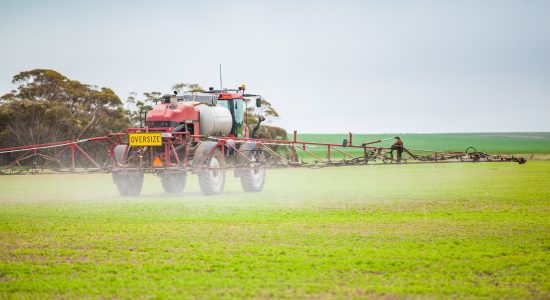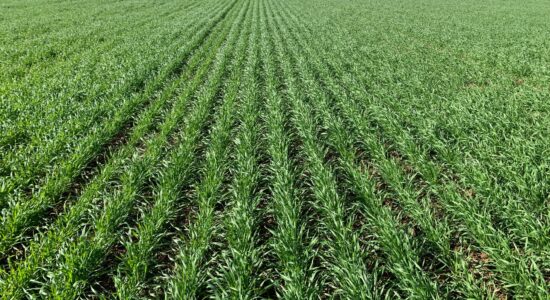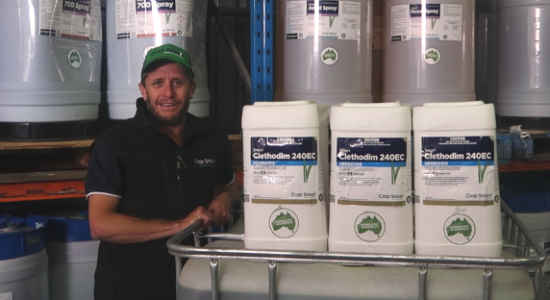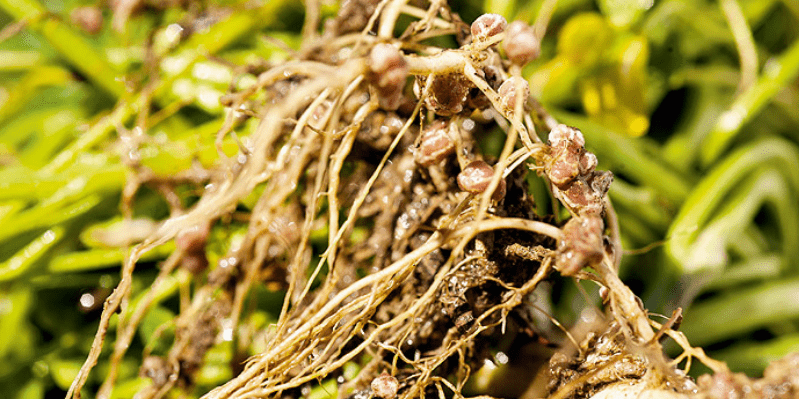
Pulse Inoculation under Adverse Soil Conditions
For a legume plant to fix nitrogen
It needs to form a symbiotic relationship with rhizobia (a type of bacteria). If the soil does not have enough of the bacteria then we add it in the form of inoculants either as peat slurry, granule or freeze dried. Being a living organism in adverse soil conditions such as acid soils, sandy and dry soils can significantly reduce bacterial survival.
Under ideal conditions, peat slurry inoculants provide the most reliable results in getting the highest amount of rhizobia to the soil (and the most economical). However, if dry conditions continue through autumn and farmers start planting crops into dry soil then successful inoculation isn’t as straight forward.

Fungicide seed dressings
Have shown to significantly reduce bacteria numbers in marginal soil moisture conditions (Figure 1). In an inoculant responsive site, the seed dressing should not be applied (if possible) to the seed, with the best practice being to separate the inoculant from the seed by applying the peat in-furrow or using a granule.
Under optimal conditions, fungicide seed dressing may not be a problem if applied within the time specified on the packaging.
In sub-optimal conditions and at a responsive site on a Lameroo sand, doubling of the peat slurry rate has shown to increase nodulation on chickpeas that were dry sown 18 days before a rain event (Ballard et al.). In this trial, a ‘high count’ experimental granule further increased the nodule number over the double rate peat. Granule products can vary significantly and success is reliant on the number of rhizobia delivered. The success of the double peat in this trial was encouraging and may be sufficient in a less responsive situation (providing it flows well enough through machinery).
Generally speaking
The highest success from dry sowing will be from low inoculant responsive sites such as neutral to alkaline soils (excluding very sandy soils) with a pulse crop grown in the last 3-4 years of the same rhizobia strain. The most care needs to be taken with dry sowing pulses into acid soils, sandy soils or to chickpeas, with success improved by doubling peat rate or using a good granule product and sowing with rain expected within a week.
The Smart Agro
Reference
Ballard, R. Farquharson, E. Ryder, M. Denton, M. Rathjen, J. Henry, F. Brand, J. Whitworth, R. Haskins, B. Seymour, M and Yates, R. (2019) Fixing More N – Improving the performance of Rhizobial Inoculants in Suboptimal Conditions. GRDC Grains Research Update Wagga Wagga 2019. https://grdc.com.au/resources-and-publications/grdc-update-papers/tab-content/grdc-update-papers/2019/02/fixing-more-n-improving-the-performance-of-rhizobial-inoculants-in-suboptimal-conditions

